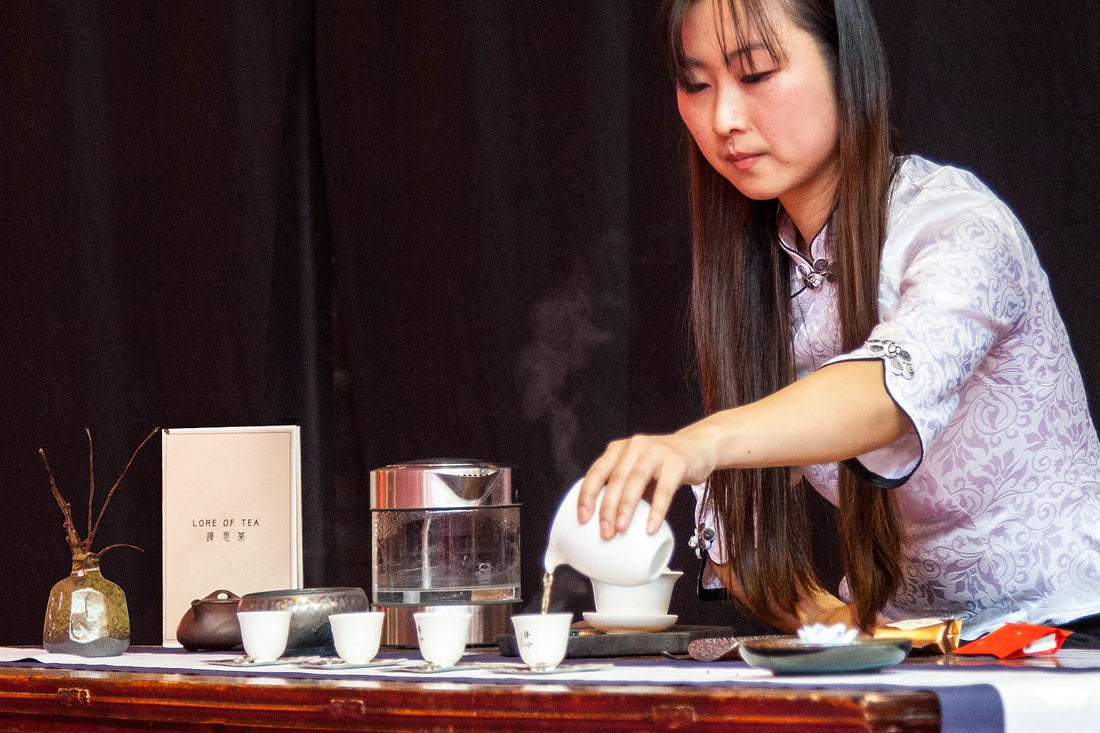
The Tradition of Chinese Tea Ceremonies.
The story of tea begins in China...
It was first discovered as medicine during the Han Dynasty (206 BC–220 AD) and was originally used as a cure for deceases. Surprisingly, it took a while for people to discover that tea was pleasant to drink. Before it was developed into the aromatic beverage we know off today, it was eaten as vegetables and used in cooking and making of dishes. Additionally, it was so commonly used in ritual offerings, that a deep-rooted custom of funerals having to be conducted with tea, still holds its significance with Chinese people and the minority tribes in China, today.

Why is tea so closely linked to funerals?
Tea as a form of art.
Apart from the distinct qualities that make tea so special, such as its complexity, its depth and its characteristics, the ceremony, preparation and the use of artwork and beautiful items to enhance the overall atmosphere, makes the whole experience differ completely from how we handle it in The UK.
-
Ceramics
-
Cups
-
Teapots
-
Decorations to make a beautiful tea table
-
Incense
-
Flowers
What is the difference between Japanese and Chinese tea ceremony?
For the Chinese, the tea ceremony is not just about the formalities, but the taste of tea is a very important part of the tradition. People do not believe in adding flavours to their beverage, they drink the tea as it is. Normally the leaves can be infused for seven, eight, or even more times. So, each infusion is served and people experience the tea as it evolves through the different infusions.

The tea ceremony.
-
Warm up the teacups and sets to keep the temperature. Clay teapots made from purple clay are the best, as they breathe and absorb and give back the aroma of tea.
-
The manner of serving should be relaxed and gracefully reflected mostly through hand movements, facial expressions and the traditional ceremonial clothing.
-
Take the tea leaves and infuse them with pure water that has just been brought up to the boiling point, but not beyond it.
-
With relaxing music playing in the background, like wine tasting, taste the tea to get an idea of the flavour and aroma you will get from the leaf and the shape of the cup.
-
Smell the scent of the tea leaf.
-
Bow.
-
Serve and appreciate the good tea and concentrate on enjoyment from the colour, atmosphere, flavour and scent alike.
-
Pause between each cupful and meditate upon the experience.
